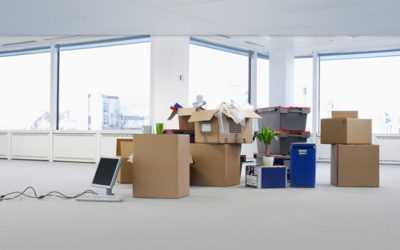Thinking of moving your office to a new location? While moving offices can be exciting, it is also a huge responsibility. If you are the person managing the relocation, your objective would be to minimize disruption. Haven’t yet decided just how you will be managing the move? Don’t worry; help has arrived!
We list down eleven things that can turn any move into a smooth one:
1. Make a plan
Depending on when you need to occupy the new office space and vacate the old one, you will need to stick to a time frame. Once you know the date, you can get started on making a schedule for every part of the move. Use these calendars to set things up. Then move on to…
2. Evaluate your equipment
Before you close those cartons with vinyl tape, make sure that you have reviewed all the equipment. That would include the things that you will be taking to the new office. Make a list! Besides that, there will be things that need upgrading/replacing. List those down separately. After that, turn to any IT and phone equipment that the company had leased but is no longer needed. Returning it will get your ROI. After all, moving has its own expenses.
3. Donate the rest
Cast an eye on the remaining stuff. Instead of paying to get those items all the way to the new office, why not recycle them? Donate them to a registered charity and get a tax break for your trouble!
4. Order requirements for the new office
Now that you have taken stock of the equipment already present in the old office, it is time to move on to what you’d need for the new one. Depending on the kind of business in question, you may need to order stuff to fulfill the staffs’ needs.
5. Vet the documents
Businesses that have run for some time will have tons of documents. While some of them will be required for record keeping and legal purposes, it may be time to dispose of the others that aren’t useful anymore.
Check out the timeline for the documents commonly found in offices:
- Contracts/ Accident Reports — 6 Years
- Deeds/ Auditor Reports/ Financial Statements/ Tax Returns — Permanent
- Cancelled Checks/Contracts/Expense Reports/Invoices/Time Cards/Deposit Slips — 4 Years
- Safety Reports/Personnel Files/Settlement Claims – More than 7 years
6. Work on the website
Successful businesses maintain a consistent online presence. It is likely that your company has a website too. For starters, the address for the offline location of your company’s offices will need to be changed. Have an SEO expert go through the whole website and change what needs to be modified. Doing so will also bring the company more local SEO success. Its chances will be hurt if the business is simultaneously being ranked for multiple listed addresses by the search engines. Read more about what needs to be done in that regard here.
7. Research before hiring a moving company
You can’t afford not to do so. Delicate equipment trashed, cartons gone missing, and the movers not showing up on schedule are just some of the things that may happen. So, take your time, talk to clients who have worked with the moving company of your choice before, and read online reviews prior to settling down on one company.
8. Unplug to avoid mixed connections
The first day after a move is usually characterized by no or very little work done. One of the main reasons that happens is because the phone systems and internet connections at the new place haven’t yet gone live. Get to work on that before the move. If you will be switching service providers, then there will be work that needs doing.
9. Be extra careful with IT equipment
To an employee, the desk assigned to them means a lot more than just a place where they sit down. The keyboard type, the height of the monitor, and a hundred things matter and can affect their work efficiency. Each employee will have their own preference for configurations, screen equipment, etc. Moreover, most modern businesses are going to need their IT systems working if they are to run smoothly. Therefore, exert extra care when the servers that host critical data are being relocated, and you will have minimized the downtime.
10. Meet the management
An office building and its operations run seamlessly with the help of building management. Meet with the new building manager to get started on the right terms before you move in. Note down their contact details for emergencies during – and after – the move.
11. Read up on the rules
Ask for the rules set by the building management and go through them. Then make sure all the employees follow them.
Once you have taken care of these eleven things, the office move should go much more smoothly. Best of luck!
